15. August 2000 10:42
by Rene Pallesen
0 Comments
Ecochallenge ( Sabah 2000 )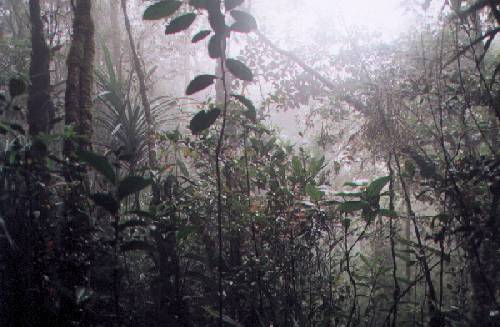
The Wildlife in Borneo . . .The jungles in Borneo are really dense, dark and humid.
You will find that some of the photos look as though they have been over-exposed, but in reality, it is just the humidity in the air.
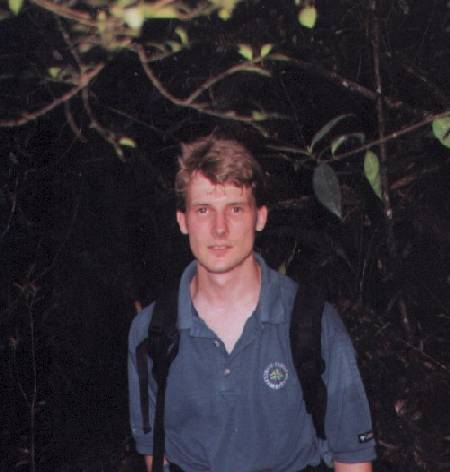
I have a photo of this at home - Glen enlarged it for me, and framed it!
Don't ask me why - I think I look rather wasted there.
Glen and I tried to race through the jungle.
The climb to the top of the mountain is rated as a 1.5 hour climb... Glen and I have done it in 26 minutes... actually I was confident that I could do it in less than 20 and so I did!
I held the record of taking 17 minutes to race to the top of Mt Silam, covering a distance of approx 4 kilometres through the jungle, up a mountain.
I was getting really fit (My girlfriend was proud of me).
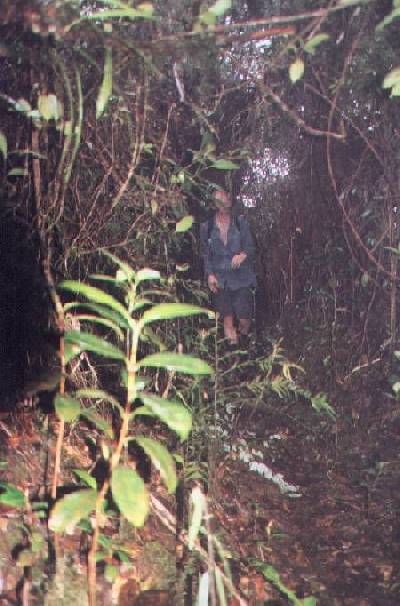


This photo shows how dense and dark the jungle can be. It was so humid there... no, not because I hadn't cleaned my lenses.

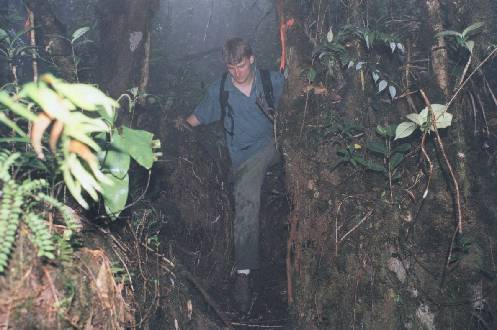 You can see how muddy it is in the jungle - I became quite dirty after many trips into the jungle.
You can see how muddy it is in the jungle - I became quite dirty after many trips into the jungle.
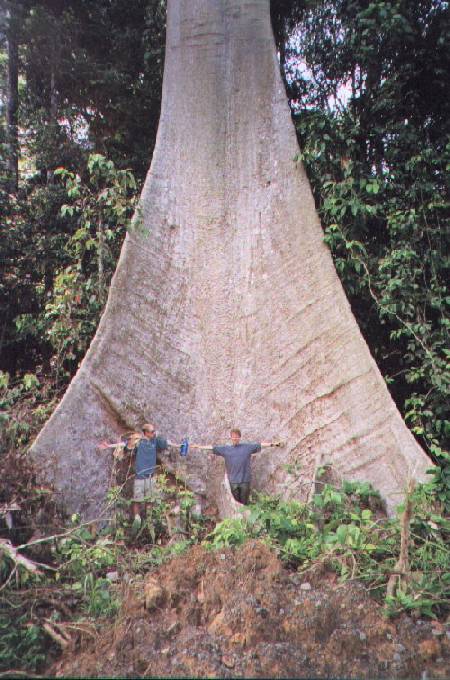
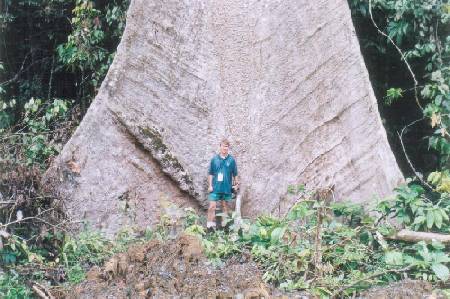
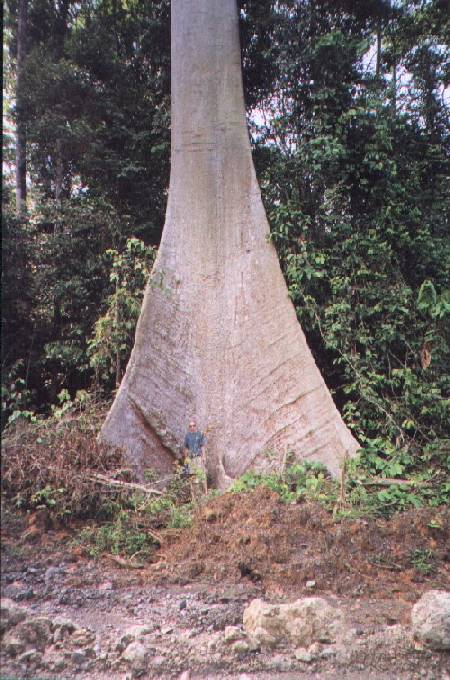
I think these trees are just as big as the Californian Redwoods. They might not be as old, but definitely just as big.
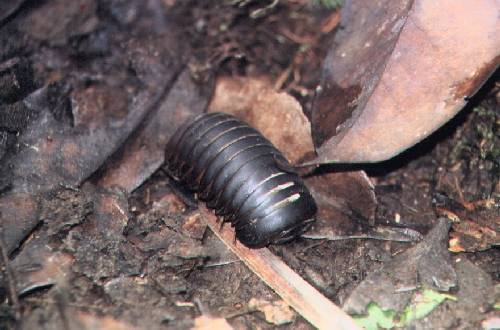
This was taken with a 300mm lens, from 1.5 metres.
The most amazing thing about them, is when they are scared, the curl up into little "marbles".
It looks like a small bug, but it is actually at least 7cm long, which is actually quite big.
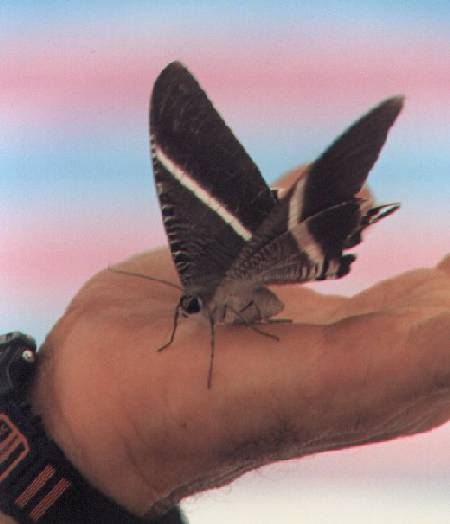
I noticed in Borneo, most of the insects there were huge.
The wingspan of the brown moth was about 15cm wide - huge!
They are mostly active at night, which is quite common for creatures in the jungle.
A couple of the girls stationed in the jungles, was stationed here. Not a wise decision, considering these girls were paranoid about the insects.
(Note: in the photo below, I still had conjunctivitis) I had the red eyes for most of the trip.


Big and beautiful, don't you think? You can see how big the black moth is compared to the size of the telephone.



These plants were kind of special because each branch split into two, so by the end of it, they formed a hexagonal pattern.
Below, are plants known as the "pitcher" plant.
The pitcher plants are meat-eating plants - you have watch out not to fall into them because they will swallow you whole.
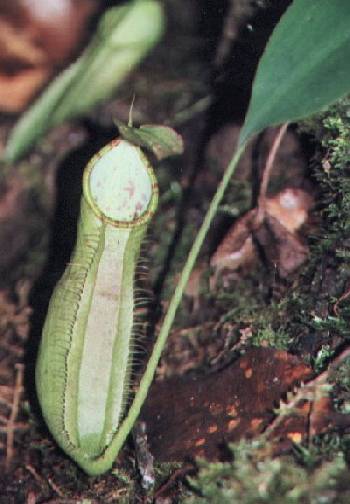
If you just believed that, you are very gullible! *laugh*
The pitcher plant, like other carnivorous plants, feed on insects.
They have sweet-smelling nectar that attract the unsuspecting insect to it.
When the insect lands, it finds the surface slippery and fall straight into the “pitcher”, where the plants juices drowns it and is digested by the plant.
You may have heard of other type of carnivorous plants such as the Venus Fly Trap, and the Sundew plants.
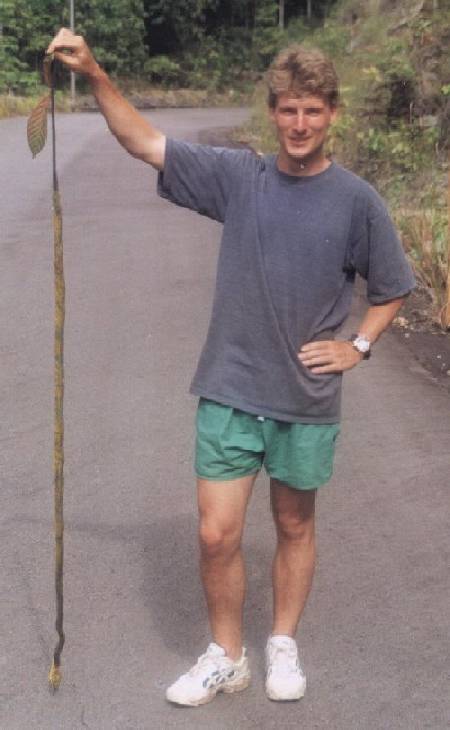
Yes, you see me holding the snake with a leaf.
It was a poisonous snake, and I was worried about it's venom getting on my skin.
For example a puff adder, contact with the venom numbs the skin.
I was not familiar with the snakes in Borneo, and was not about to risk it.
 The tarantella was sitting inside the catering tent hunting.
Everyone was looking at it and admiring it, which was pretty amazing, considering I know many people who would willingly kill a spider in sight.
The tarantella was sitting inside the catering tent hunting.
Everyone was looking at it and admiring it, which was pretty amazing, considering I know many people who would willingly kill a spider in sight.
Back to Top
Return to Borneo Homepage
Created: 7 Dec 2001